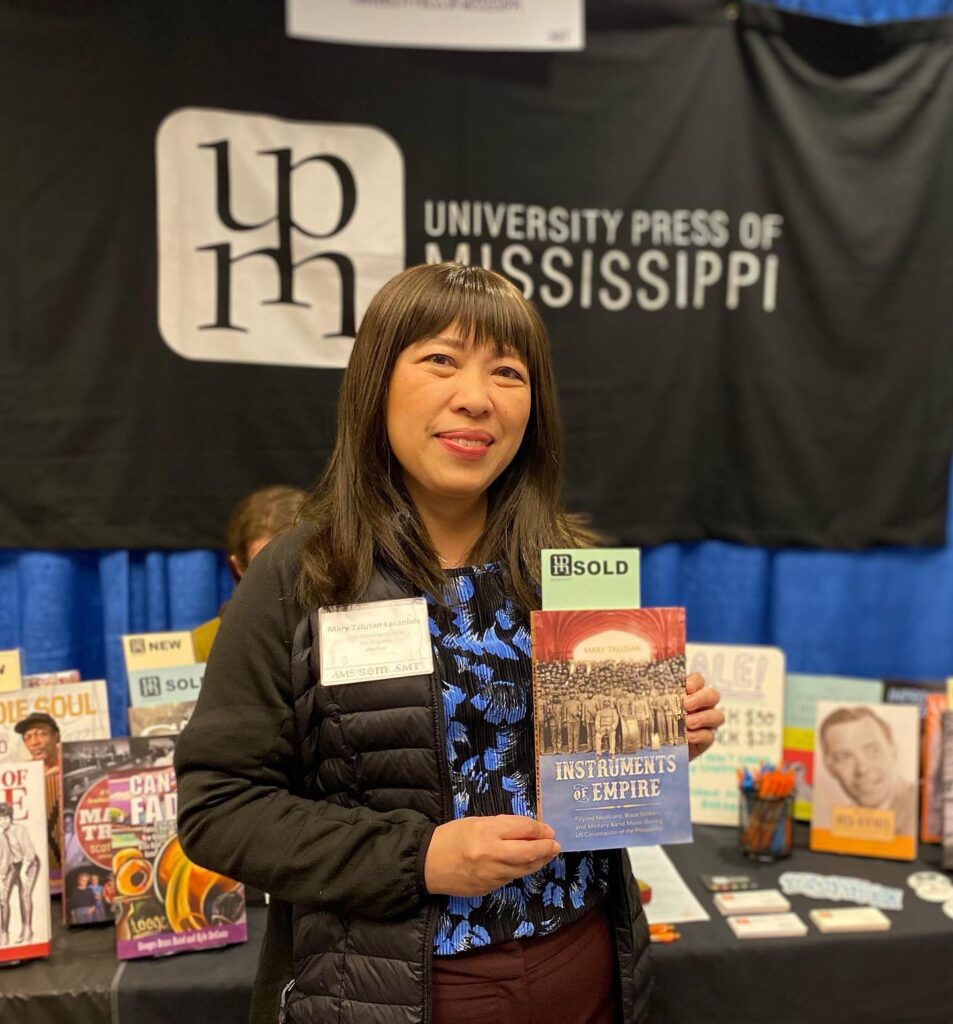Mary Talusan’s Instruments of Empire: Filipino Musicians, Black Soldiers, and Military Band Music During US Colonization of the Philippines examines the story of the famed Philippine Constabulary Band, which was established in 1902 and had local and international successes in the early 20th century.
Published by the University Press of Mississippi, the publishing arm of a consortium of the state’s higher learning institutions, the book analyzes the different facets of the band in relation to the United States propaganda of “bringing civilization” to the Philippines.
Talusan notes that the “PC Band’s popularity with American audiences was more than an appreciation for musical artistry; the band’s achievements validated the political aims of US imperialism and provided aural and visual proof of the success of ‘benevolent assimilation’” concept of the Americans which gave a notion that the US was not an imperial force but a friend to the Filipinos.
She likewise noted that “military band music became an effective instrument of empire to form a cultural bridge, a lingua franca and a mutually valued endeavor for colonizer and colonized, subjugator and subjugated alike.”
The leader of the band was Lt. Walter H. Loving, an alumnus of the Boston Conservatory of Music and an African-American, who together with other black Americans who also faced racist issues in the military and their hesitancies on subjugating the people of the Philippines.
Talusan’s in-depth analyses of band-related events, may it be historical, political, or artistic, are anchored on interviews, archival documents which include newspaper articles, and other relevant sources.

In the book, she grounded her study first by discussing the Filipino banda tradition which was introduced by the Spaniards then went on to discuss PC Band’s participation in the infamous 1904 Saint Louis World’s Fair juxtaposed with the exhibited “uncivilized” indigenous peoples of the Philippines; the inauguration of William Henry Taft as the 27th US president, the tours after that in many US states, and its participation in the Alaska-Yukon-Pacific Exposition in Seattle, Washington, all in 1909; its participation in 1915 at the Panama-Pacific International Exposition; and its reincarnation as the Philippine Army Band in 1937 with its stint at the Golden Gate International Exposition in 1939.
It is important to mention that Talusan did not negate the artistic talent of the Filipinos who, for a fact, were excellent musicians prior to the arrival of the Americans.
She narrates that the band’s playing of top-notch symphony and opera music as well as patriotic marches amidst the prevailing racial tensions and imperial attitude at that time is key for them to be viewed as no-nonsense musicians to their American audience.
Often obscured by the American press then, Talusan likewise paid tribute to the immense contribution of Loving to the development of Philippine music and his role in what she calls’ the “racial uplift” of the Black Americans.
Her contention that the “Philippine brass band tradition did not cease to exist under US colonization, but rather continued to develop, grow, and flourish beyond the Philippines” is spot on and is indeed a testament of Filipino ingenuity in the field of music and musicology.
A critique of the US imperial moves in the Philippines and the racial divide with music as medium, Instruments of Empire is praiseworthy and highly commendable as its puts into spotlight aspects of Philippine history and the US-Philippine relations obscured from the consciousness of both countries.
Her use of newspaper articles gives credence to the role of the press in framing societal beliefs and spreading out good or bad propaganda towards certain topics which are still prevalent today.
This book is a must-read and as with other internationally-published book on the Philippines, should easily be made locally accessible.
